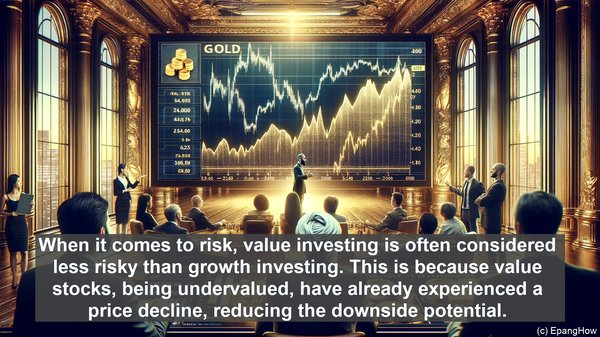Introduction: The World of Investing
Hello and welcome to our channel! Investing, as we all know, is a crucial aspect of wealth creation. However, with numerous investment strategies available, it’s essential to understand the nuances of each. Today, we’ll be focusing on value investing and growth investing, two strategies that have stood the test of time and have their own unique merits. So, let’s dive in!
Value Investing: The Art of Finding Undervalued Stocks
Value investing, as the name suggests, revolves around identifying stocks that are undervalued by the market. Proponents of this strategy believe that the market sometimes misprices stocks, presenting opportunities for astute investors. Value investors often look for stocks with low price-to-earnings (P/E) ratios, low price-to-book (P/B) ratios, or high dividend yields. The idea is to buy these stocks at a discount, with the expectation that their true value will be recognized in the future, leading to price appreciation.

Growth Investing: Capitalizing on Future Potential
Unlike value investing, growth investing focuses on stocks that have the potential for high future growth. Investors employing this strategy often target companies in emerging industries or those with innovative products and services. While these stocks may have higher valuations, growth investors believe that the companies’ earnings and revenues will increase significantly in the future, justifying the current prices. The goal here is to benefit from the anticipated price appreciation as the company grows and expands its market share.
Risk and Volatility: A Trade-off to Consider
When it comes to risk, value investing is often considered less risky than growth investing. This is because value stocks, being undervalued, have already experienced a price decline, reducing the downside potential. On the other hand, growth stocks, while offering the potential for high returns, can be more volatile. This volatility is often attributed to the market’s high expectations from these companies. A slight miss in earnings or any negative news can lead to significant price swings.
Time Horizon: Short-term vs Long-term
Another key difference between the two strategies lies in the time horizon. Value investing is often associated with a shorter time frame. Once the market recognizes the true value of the stock, the investor may sell it for a profit. In contrast, growth investing is more long-term in nature. Investors in growth stocks often hold onto their positions for several years, allowing the company’s growth story to unfold fully. This longer time frame also means that the investor needs to be patient, as the expected growth may take time to materialize.
Dividends: A Consideration for Value Investors
For value investors, dividends play a significant role. Many value stocks, especially those in mature industries, offer regular dividends. These dividends not only provide a steady income stream but can also act as a cushion during market downturns. Growth stocks, on the other hand, often reinvest their earnings back into the business to fuel further expansion. As a result, they may not offer substantial dividends, if any.

